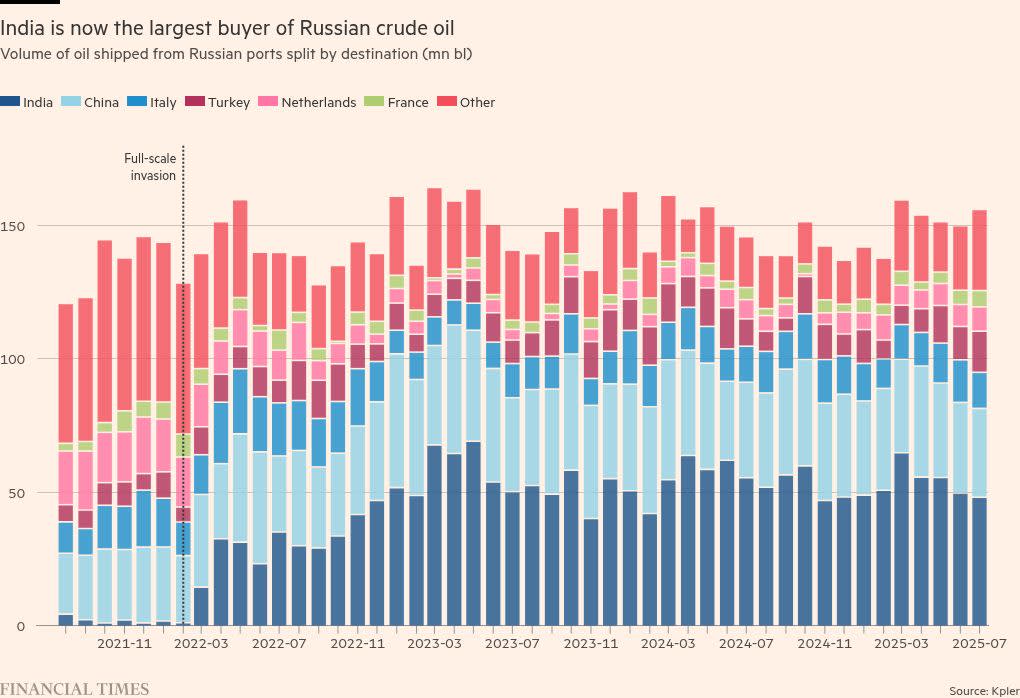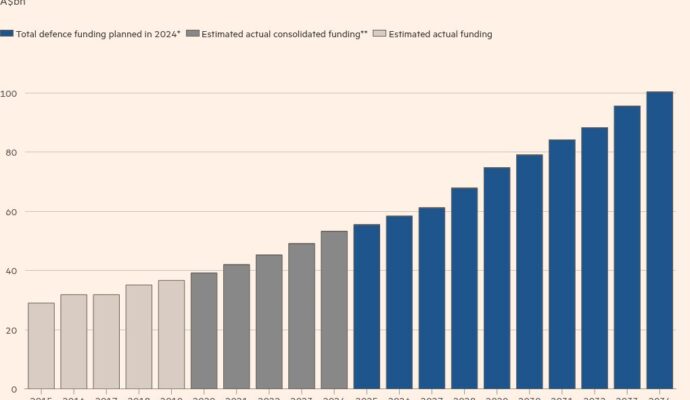Unlock the White House Watch newsletter for free
Your guide to what Trump’s second term means for Washington, business and the world
Donald Trump announced an additional 25 per cent tariff on imports from India due to New Delhi’s purchases of Russian oil, in a move that will raise tensions with Prime Minister Narendra Modi’s government.
The decision was published on Wednesday in an executive order from the White House shortly after Steve Witkoff, a senior US envoy, met Russian President Vladimir Putin in Moscow.
“I determine that it is necessary and appropriate to impose an additional ad valorem duty on imports of articles of India, which is directly or indirectly importing Russian Federation oil,” Trump said.
India’s foreign ministry declined to comment, referring back to a statement made on Monday when Trump first threatened the move, in which it said “the targeting of India is unjustified and unreasonable”.
The executive order said the 25 per cent levies connected to India’s oil trade with Russia would be added to existing duties imposed on Indian imports.
Prior to the full-scale invasion of Ukraine, India imported a minimal amount of Russian seaborne crude. It has since, however, become its largest buyer.
India has failed to reach a trade deal with Washington and was already facing 25 per cent tariffs on its exports to the US before Trump’s announcement to punish it for buying Russian oil.
A White House official confirmed that when the extra duties take effect on August 27, Indian imports subject to the levies will face 50 per cent tariffs in total.
Trump’s move will widen the rift between the world’s two largest democracies, which have expanded their ties in defence and technology and had been nearing agreement on an interim trade deal just weeks ago.
It came after the US accused New Delhi of funding Russia’s war on Ukraine via oil imports, mocked India’s “dead” economy and praised its arch-enemy, Pakistan.
The executive order was published despite Witkoff’s meeting with Putin, which a Russian official described as productive.
“Russia had conveyed signals to the American side on the Ukrainian issue and received corresponding signals from Trump,” said Putin’s foreign policy adviser Yuri Ushakov.
A blow to Russia’s oil revenues would add to mounting budgetary pressure. Russia’s energy income has been hit after global oil prices slumped owing to Trump’s tariff war, with a stronger rouble aggravating the losses.
According to Indian customs returns, the country imported $19.5bn of crude from Russia in the first five months of 2025. Since the full-scale invasion in 2022, the country has reported $137bn of imports.
Analysts said the direct impact to India of the falling-out with the US, its largest trading partner, could prove to be limited because its economy was largely driven by domestic demand, not foreign trade.
India’s $86.5bn exports to the US accounted for about 2 per cent of nominal GDP in the 2024-25 fiscal year, according to Indian government trade statistics.
However, analysts said, the rift with Washington could harm confidence in the world’s fifth-largest economy at a time when the Modi government was trying to attract investment from manufacturers such as Apple, which now sources most of the iPhones it sells in the US from plants in southern India.
“The direct economic hit from higher tariffs will not be that large,” said Jeremy Zook, director of Asia-Pacific sovereign ratings with Fitch Ratings. “But this could negatively impact investor sentiment, especially as India was trying to place itself a destination for China plus one investment.”



